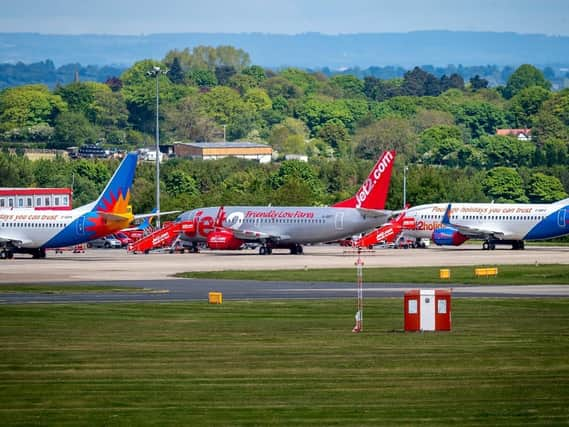What should I do before I travel abroad? Which countries are on the red list now?


The government has scrapped the green and amber list and reduced the number of countries on the red list by removing 47 countries; arrivals from these countries will no longer need to quarantine in a hotel for 11 nights.
Following complaints about PCR test prices, visitors returning to England from abroad will not need to take a PCR test, instead they will only need to take photographic evidence of a negative lateral flow test. There is no definite date for this yet but it is expected to be from the end of October.
What should I do before I travel abroad?
Advertisement
Hide AdAdvertisement
Hide AdTravel preparation largely depends on the destination, with different countries having different entry requirements for tourists.
You can check the entry requirements for the country you are travelling to by visiting the gov.uk website.
For instance, many countries will require proof of vaccination with an NHS Covid Pass, while others ask that a health form is filled in before travel.
Fully vaccinated UK residents will no longer need to take a pre-departure lateral flow test before they travel back to England from a non-red list country.
Advertisement
Hide AdAdvertisement
Hide AdHowever, as of the time of writing (October 11), travellers must still take a PCR test on the second day after they return - although there is speculation this could soon switch to a lateral flow test. Holidaymakers cannot purchase a PCR test through the NHS - they must use a private test provider which can be found on the gov.uk website.
You must also fill in a passenger locator form 48 hours before you arrive in England.
What to do if you’re returning from a red list country
If you have been in or travelled through a red list country or territory in the last 10 days before you return to England, you will only be allowed to enter the UK if you are either a British or Irish National or have residence rights in the UK.
If you live in England, you must not travel to countries or territories on the red list.
Advertisement
Hide AdAdvertisement
Hide AdBefore you travel to England, you must take a Covid-19 test in the three days before you travel to England. This includes children between the ages of 11 and 17.
You must also book a quarantine hotel package, including two Covid-19 tests and complete a passenger locator form. Children between the ages of five to 17 must also quarantine in a managed hotel for a full 10 days and take two Covid-19 tests.
Children under the age of four do not have to take any travel tests but must quarantine in a government-managed hotel.
How to prepare for travelling abroad if you are unvaccinated
Advertisement
Hide AdAdvertisement
Hide AdThose who are unvaccinated will still need to take a pre-departure test before travelling back to England and must buy a PCR test for their day-two test.
This is followed by a 10-day quarantine at home for those who are unvaccinated, wherever they have travelled from and will also have to take a day eight test whether they have done the Test to Release test or not.
The government’s Test to Release scheme means that unvaccinated travellers can buy a PCR test on day five if they want their quarantine period to end. You cannot take your Test to Release test until you have been in England for five full days.
Anyone, whether unvaccinated or fully vaccinated, who is travelling back from a red list country is still expected to pay £2,285 to quarantine for 11 nights at a quarantine hotel approved by the government. Those travelling from a red list country are not eligible for the Test to Release scheme.
Which countries are on the red list?
Advertisement
Hide AdAdvertisement
Hide AdThe government has removed 47 countries from the red list and only seven are remaining; these are Columbia, Dominican Republic, Ecuador, Haiti, Panama, Peru and Venezuela.
Since October 4, the government has scrapped the green and amber lists, which are now under the category ‘rest of the world’.